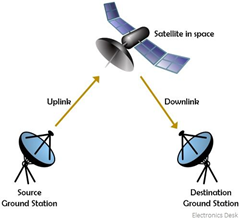

Context
Recently, the Union Cabinet has approved the new guidelines for up-linking and downlinking of television channels in India.
|
What does Uplinking-downlinking mean? In satellite telecommunication, a downlink is the link from a satellite down to one or more ground stations or receivers, and an uplink is the link from a ground station up to a satellite. |

Highlights of the Order:
- All the Telecast stations holding permission would have to broadcast contents on issues of national importance and social relevance for at least 30 minutes every day.
- Objective:
- The provision has been introduced as ‘airwaves/frequencies’ are public property and need to be used in the best interest of the society.
- The eight listed themes include;
- Education and spread of literacy,
- Agriculture and rural development,
- Health and family welfare,
- Science and technology,
- Welfare of women,
- Welfare of the weaker sections of society,
- Protection of environment and of cultural heritage, and
- National integration.
- Exceptions: Foreign channels, Channels related to sports, where it would not be feasible to broadcast such content.
- Decision making Authority: As and when required, the Centre would issue general advisories to the channels in this regard.
- Significance of the step: The new guidelines will replace those operational since 2011, would ease the issue of permission to the companies and limited liability partnership firms (which have been allowed for the first time) registered in India for uplinking-downlinking of TV channels and associated activities.
|
Frequency bands used for Telecommunication: The following table shows the main frequency bands used for satellite links.
The C band is the most frequently used. The Ka and Ku bands are reserved exclusively for satellite communication but are subject to rain attenuation. Some satellites carry transponders for both C and Ku bands. |

